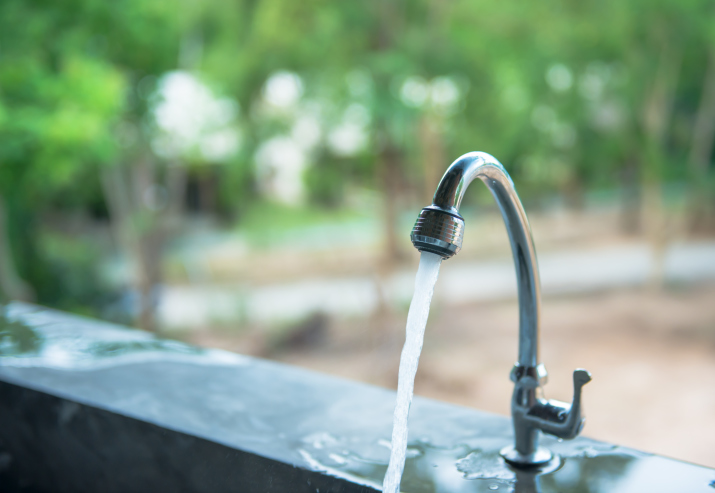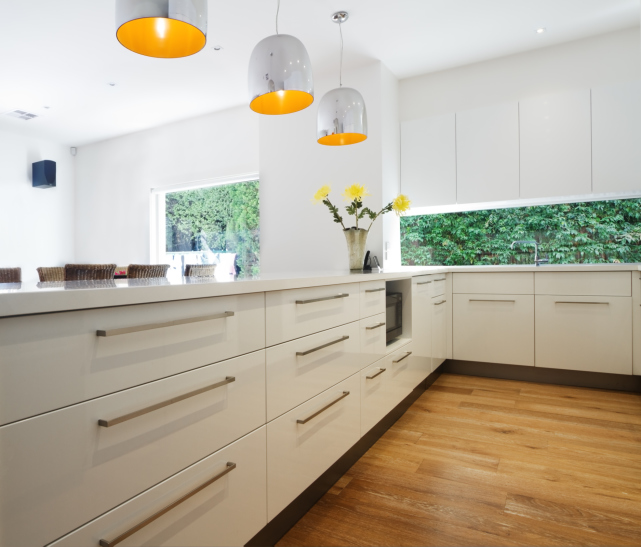3 Easy Ways to Make Your Home More ‘Pet Friendly’
 Whether you’re moving to a new home or you have a new family pet, it can be a struggle to make the place a little friendlier for them. From the garbage can to the cupboards and doors, there can be a lot of dangers that have the ability to hurt your furry friend you might not be aware of. If you’re looking for some simple ways to make their life a little easier, here are a few things you can do.
Whether you’re moving to a new home or you have a new family pet, it can be a struggle to make the place a little friendlier for them. From the garbage can to the cupboards and doors, there can be a lot of dangers that have the ability to hurt your furry friend you might not be aware of. If you’re looking for some simple ways to make their life a little easier, here are a few things you can do.
Take Care Of The Trash
The image of dogs sifting through the trash is common for a reason, so it’s important to guard your animal against the dangers of the dustbin. In addition to taking out any perishable goods on a consistent basis, it’s a worthwhile investment to purchase a tougher trash bin that your animal can’t get into. This will ensure they won’t be able to get at foods like fruit pits, coffee grounds and chocolate, which can be very harmful to their system.
Pick The Right Flooring
If you have the choice, ceramic tile or hardwood can be a great way to alleviate the tidy-up of having a live-in pet since you can easily wipe or sweep away the damage. If this isn’t possible and carpet is your only option, stick with something that closely matches the color of your pet. As well, if you’re letting your pet on the furniture, it’s worth investing in materials like leather and suede that are more durable and easy to clean.
Give Them Their ‘Space’
You may not have to worry about cleaning up after your pet as much if you can provide them with a space that’s all their own. While it doesn’t have to be anything fancy or sprawling, providing a comfortable bed where they like to nap and a water bowl or selection of toys will do the trick in making them feel right at home. It may also have the added benefit of keeping them away from the family couch!
Many homeowners are so pre-occupied with making themselves comfortable in their family home that they forget about the animal in the family. While it won’t necessarily take much to please your pet, watching the waste and giving them their own comfortable area can go a long way in making your home pet-friendly. If you’re currently in the market for a new home, contact our trusted real estate professional for more information.

 With the impact we have on our environment becoming a matter of greater concern, it’s becoming more important for the average citizen to know they’re doing their part. While there are many simple tricks for saving water that will make you feel better about your environmental footprint, here are a few easy upgrades that will make that saving a little more automatic.
With the impact we have on our environment becoming a matter of greater concern, it’s becoming more important for the average citizen to know they’re doing their part. While there are many simple tricks for saving water that will make you feel better about your environmental footprint, here are a few easy upgrades that will make that saving a little more automatic. Homeowners who are thinking about listing their home for sale in the coming weeks or months may be focused on improving their home to help it sell more quickly, but there also may be a focus on adding value to the home in the process. While each home is unique, there are a few projects that most homeowners would benefit from. In fact, these are a few simple and easy projects that can typically be completed over the course of a weekend; that can add value and desirability to the home.
Homeowners who are thinking about listing their home for sale in the coming weeks or months may be focused on improving their home to help it sell more quickly, but there also may be a focus on adding value to the home in the process. While each home is unique, there are a few projects that most homeowners would benefit from. In fact, these are a few simple and easy projects that can typically be completed over the course of a weekend; that can add value and desirability to the home. Many people look forward to the long, relaxed, sunny days of summer, but they also dread opening up their energy bills throughout the summer months. Cooling a home can be costly, and many are searching for convenient ways to lower cooling costs without sacrificing on comfort inside the home on the warmest days of the year. These are just a few of the cost-effective and convenient options that can help homeowners to reduce cooling costs throughout the summer.
Many people look forward to the long, relaxed, sunny days of summer, but they also dread opening up their energy bills throughout the summer months. Cooling a home can be costly, and many are searching for convenient ways to lower cooling costs without sacrificing on comfort inside the home on the warmest days of the year. These are just a few of the cost-effective and convenient options that can help homeowners to reduce cooling costs throughout the summer. When spring arrives, many people want to spend more time outdoors enjoying the fresh air and warmer temperatures. While you could lounge in a chair with a good book, you may find it more enjoyable to plant your own vegetable garden. This is an on-going project that will require you to spend time outdoors regularly, and it can be quite enjoyable to watch the fruits of your labor spring to life. More than that, you may love to sample and even share the tasty treats that you have grown on your own. If you are ready to get started planning and planting your vegetable garden, follow these preliminary steps.
When spring arrives, many people want to spend more time outdoors enjoying the fresh air and warmer temperatures. While you could lounge in a chair with a good book, you may find it more enjoyable to plant your own vegetable garden. This is an on-going project that will require you to spend time outdoors regularly, and it can be quite enjoyable to watch the fruits of your labor spring to life. More than that, you may love to sample and even share the tasty treats that you have grown on your own. If you are ready to get started planning and planting your vegetable garden, follow these preliminary steps.